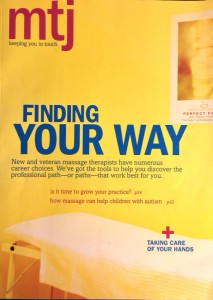Carpal Tunnel Syndrome Confusion
Carpal tunnel syndrome has become a buzz word that has, in my opinion, lost value in regard to true meaning. It seems any pain near the wrist gets this label, whether accurate or not. The carpal tunnel is actually a specific space on the palm side of the wrist where several types of tissue pass through. The tendons that pull the your hand closed, the tendons that bend the wrist, and the median nerve pass through a ‘tunnel’ made up of the bones on 3 sides and a band of connective tissue on the front. You can feel this by opening your fingers and extending your hand back. With the other hand you can feel the two bones that are prominent between the wrist and the forearm. Imagine a band of connective tissue stretched between these bony prominences, and you can get a sense of how the tunnel is formed. Looking at that you can bend your fingers one at a time and see the tendons that go through the tunnel.
Putting The Problem In Perspective:
One problem I believe happens with many doctors and other health practitioners is that they do tests to find “the cause” of a person’s complaint or condition. This sounds good except that I have found very few conditions that were from a single cause, Wouldn’t it make more sense to ask what factors (how many) can cause or contribute to a given condition or complaint? Viewing the problem this way would allow us to create a unique treatment plan for the source(s) of each person’s pain rather than a generic protocol to treat “X” diagnosis.
Neck Surgery For CTS?
Considering what you know from the paragraphs above, you might be surprised (or confused) if I told you that some people have surgery in their neck and/or shoulder for carpal tunnel syndrome. Any such procedure at the neck (even if it relieved the symptoms) would not have actually been caused by the carpal tunnel, right? Also of interest are the people who have had multiple surgeries at the wrist, yet never had any relief.
Relief From CTS Pain
I believe many people could experience dramatic relief from forearm, hand, and wrist pain if they received individualized therapy based on their unique combination of factors involving muscles, joints, and nerves. The nerves that effect the forearm, wrist, and hand start in the neck, and then pass between many joints and layers of muscle and connective tissues. There are many places that the nerves can become irritated in the neck, between the neck and shoulder, in the upper arm, elbow, forearm, wrist and hand. Some pain comes from muscles instead of the nerves, and may even be due to muscles sending pain from a remote location.
So What’s A Person To Do?
Find a therapist who looks at all contributing factors and knows how to evaluate and treat each. The ideal would:
- Take a thorough history of the complaint looking for clues to contributing factors
- Measure and chart(not just look at) your posture
- Analyze movement patterns
- Measure range of motion to find restrictions
- Determine which restrictions are from joint dysfunction and which are from soft tissue origin (muscles that are tight, scar tissue pressing on nerves, etc.)
- Apply specific treatment strategies for you (not simply a carpal tunnel template)
The Ideal Therapy Will:
- Decompress and free up joints
- Restore normal resting balance of muscle groups
- Release and align any adhesions or scar tissue restrictions.
- A therapist ideally addresses the symptoms / problem with the approach described above to release restrictions starting at the neck first, then shoulder, then elbow and forearm. Using this approach, we often find that the symptoms in the wrist and hand are minimal or gone, and therapy that is still needed for the wrist and hand is easier and dramatically more productive.
Self Care For Maintenance
After relief of pain, the ideal therapist will also teach you the following to maintain the results attained:
- Proper posture adaptations (how to sit, stand, sleep, etc.)
- New movement patterns (the best way for you to walk/run, push, pull, twist, bend, and squat)
- Stretches-only for the muscles that were charted in the evaluation as being short and tight
- Therapeutic movements to keep your body moving freely
- Exercises to correct muscles imbalances found in the initial evaluation.
Best wishes for healthy hands and wrists. If you would like me to personally support your progress, please feel free to contact me.



{ 0 comments… add one now }
You must log in to post a comment.